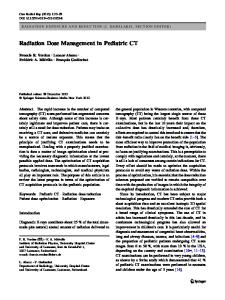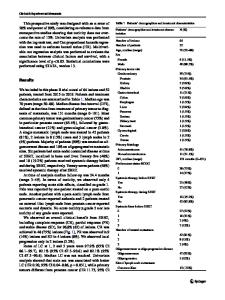Copper (II) Phthalocyanine Based Field Effect Transistors as Total Dose Sensors for Determining Ionizing Radiation Dose
- PDF / 294,678 Bytes
- 6 Pages / 432 x 648 pts Page_size
- 40 Downloads / 325 Views
Copper (II) Phthalocyanine Based Field Effect Transistors as Total Dose Sensors for Determining Ionizing Radiation Dose Harshil N. Raval1 and V. Ramgopal Rao1 1 Centre of Excellence in Nanoelectronics, Department of Electrical Engineering, Indian Institute of Technology Bombay, Powai, Mumbai – 400 076, India. ABSTRACT Changes in the material properties of copper (II) phthalocyanine (CuPc) thin-films were studied upon exposure to increasing dose of ionizing radiation using photoluminescence spectrum. We observe generation of new energy states below the band gap upon exposure to ionizing radiation. Organic electronic devices – CuPc based resistor and an organic field effect transistor (OFET) – are proposed in this work as total dose sensors for ionizing radiation. We observe an increase in the conductivity of CuPc thin-films with increasing dose of ionizing radiation. To overcome the possibility of changes/degradation in the electrical properties of CuPc thin-films upon interaction with various gases and moisture in the environment, a passivation layer of silicon nitride, deposited by hot-wire CVD process is proposed. Effect of ionizing radiation on the electrical properties of thin-films of CuPc has been studied. We observe a 170% increase in the resistance of the thin-film for a total of 50 Gy radiation dose using Cobalt-60 (60Co) radiation source. Moreover, significant changes in the electrical characteristics of an OFET, with CuPc as an organic semiconductor, have been observed with increasing doses of ionizing radiation. Experiments with an OFET (W/L = 19350 μm / 100 μm and tox = 150 nm) as a sensor resulted in a ~100X change in the OFF current for a total of 50 Gy dose of ionizing radiation exhibiting a sensitivity of ~1 nA/Gy. Moreover, implementing a reader circuit, shift in the threshold voltage of the OFET at 1e-7 A drain current displayed a sensitivity of 80 mV/Gy for a total of 50 Gy dose of ionizing radiation. CuPc based organic electronic devices have advantages as sensors because of their low-cost fabrication, large area coverage on flexible substrates, etc. INTRODUCTION Well known organic semiconducting materials, phthalocyanine and their derivatives, have been explored for numerous sensing applications as their electrical properties change upon exposure to oxidizing or reducing gases, e.g. NO2- and O3 [1,2], Hg2+ [3], humidity and illumination [4], etc. Copper (II) Phthalocyanine (CuPc) is widely used as a p-type organic semiconducting material in various organic electronic devices because of its cost effective fabrication process, large area coverage and flexibility. In this work, changes in the material properties of CuPc were studied upon exposure to ionizing radiation using Cobalt-60 γ-radiation source for measurement of total dose ionizing radiation. EXPERIMENTS
75
Photoluminescence spectrum analysis of CuPc thin-film upon exposure A thin-film of CuPc was deposited on an RCA cleaned silicon wafer by standard thermal vacuum evaporation. The material is procured from Sigma Aldrich and the deposi
Data Loading...









